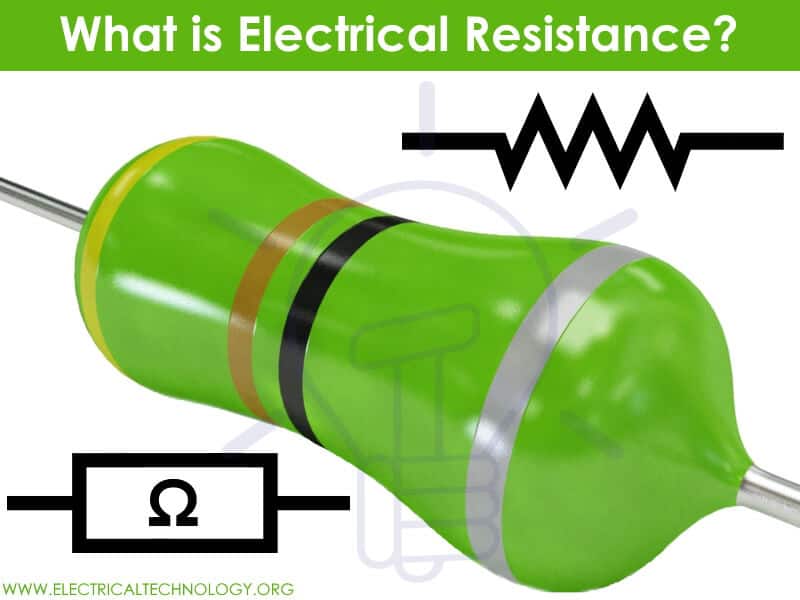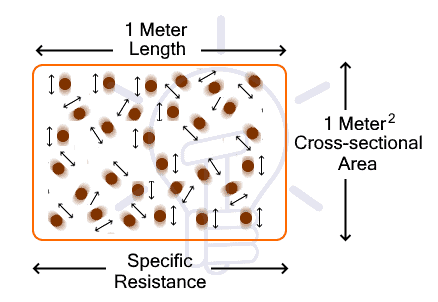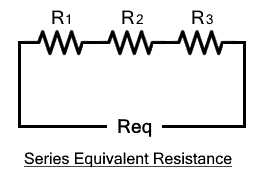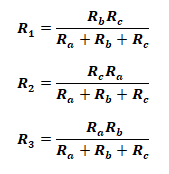What is Resistance? Resistivity (ρ) & Specific Resistance Ω.
Electrical Resistance, Its Unit, Types, Calculation & Applications
Just like voltage and current, the electrical resistance is a basic parameter of electricity. It is necessary to understand it because it is the factor that relates the voltage and current in a circuit.
What is Electrical Resistance?
The resistance also known as electrical resistance or ohmic resistance is the opposition of the flow of current. It is a property of any material to oppose the flow of the charges flowing through it. When a voltage is applied across a conductor, it pushes the current through it, which is directly proportional to the applied voltage
V ∝ I
V = RI
The resistance denoted by R, is the constant of proportionality between voltage & current.
Unit of Resistance
According to the definition of resistance,
R = V / I
R = Volts / Ampere
The unit of resistance is volts-per-ampere, but the resistance is measured in Ohms symbolically represented by Greek letter Ω. it is named Ohm after the German physicist Georg Simon Ohm, who discovered the laws of relation between voltage & current.
A resistance of One Ohm is defined as, a conductor is said to have resistance of one ohm, if it allows one ampere of current when a potential difference of one volt has been applied across it.
R = Volts / Ampere
Ω (Ohm) = Volts/Ampere
Following are the different symbol of resistors and resistance by IEC and IEEE.

Understanding the Electrical Resistance
The current-flow through a conductor is actually charges flowing through it. By definition, we knew that the resistance is the opposition to the charge flow. The conductor is made of particles that vibrate at its natural frequency. When we apply potential difference across the conductor, the charges flow through it in certain direction. It collides with the vibrating particles & also loss some energy in the form of heat & decreases their momentum. This collision of charges limits the amount of current being passed. Just like a mechanical friction that opposes the motion, electrical resistance opposes the motion of charge (current).

Resistance of a Material
As we have discussed, the resistance of a material is a variable quantity that depends on the length & width of the conducting material. We can derive equation of resistance. As we know, the resistance R is directly proportional to the length l of conductor & inversely proportional to the area A of the conductor;
R ∝ l/A
R = ρ l/A
Where ρ (Rho) is a constant, known as the resistivity of the material & it depends on the natural properties of the material.
- Related Post: What is Voltage? its Unit, Formula, Types & Applications
Resistivity
The resistivity is a fundamental property of a material that shows its strength of opposition to the current flow. It is denoted by Greek letter ρ (Rho). It is a constant value & different materials have different resistivity. It is derived from resistance;
R = ρ l/A
ρ = R A/l
ρ = Ω-m (Ohm-meter)
According to the equation, the resistivity of a material is the resistance offered by a material having area of 1 m2 & length of one meter. In other words, the resistance offered between two opposite sides of a one meter-cube of a material is called resistivity. It is measure in Ohm-meter.
Specific Resistance
The specific resistance of a material is the resistance offered per unit length & per unit cross-sectional area. It is a constant value & it is equal to the resistivity of the material. It is measured in Ohms.
The capacitor & inductor also opposes the current flow which depends on the frequency of the voltage supply. Therefore, the electrical resistance can be classified into two categories; Resistance (pure resistance) & impedance
The electrical resistance in its purest form that opposes the current flow without any dependency on the frequency of the voltage supply is called resistance. While the impedance is the opposition to the current flow that is affected by the supply frequency.
In pure resistors, the voltage to current ratio is not affected by the supply frequency. While in impedance, the voltage to current ratio varies with the frequency such as in AC (Alternating Current).
How the Resistance is Calculated for a Material
The resistance of a material can be calculated using two methods.
Using Resistivity
If the resistivity ρ, of the material is given, you can use this method to calculate the resistance of any material.
First, measure the length l of the material. Then calculate the cross sectional area A of the material. Place the values in the following formulae,
R = ρ l/A
Using Ohm’s law
According to Ohm’s law, the voltage is directly proportional to the current in a closed loop as long as the resistance remains constant. We can equation of Ohm’s law to calculate the resistance.
V = IR
R = V/I
If you know the values of voltage & current flowing through the material, you can easily find its resistance through this equation.
Equivalent Resistance in a Circuit
The resistors connected in a circuit can be added together for simplification of calculations. The resistance can be connected in either series or parallel configuration
Resistance in Series
When resistors are connected in a chain like structure known as series configuration, its total resistance is the summation or each individual resistance.
Resistance in Parallel
When resistor are connected in parallel with each other such that their both terminals are connected with each other, their total resistance is given by.

 Resistance Conversion Between Star & Delta
Resistance Conversion Between Star & Delta
The Resistance can be connected in complex configuration such as star and delta configuration.

Here is the formula for conversion between Star & Delta Connected resistors. Please refer to the article “Conversion between Star & Delta” for more details about this.
Delta to Star (or Wye) Conversion
The resistors or impedances connected in delta configuration can be converted into star configuration using the following equation.
 Star (or Wye) to Delta Conversion
Star (or Wye) to Delta Conversion
The resistance of impedance connected in star configuration can be converted into delta configuration using the following equation.
 Types of Materials Depending on its Resistance
Types of Materials Depending on its Resistance
Based on the resistance of the material, it is divided into following types.
Insulator
Insulator is a type of material that has very high resistance to the electrical current. Due to its high resistance, it does not allow the flow of current through it. It is a bad conductor of electricity & it is used for protection against electric current. The Plastic material used to cover the cable is an insulator which protects from electrical shock.
Conductor
The conductors are materials that offer very low resistance to the flow of electrical current. They are known as the electrical conductors. Metals are good conductors of electricity such as silver, copper & gold etc. The conductors are stretched into a wire to transmit electrical current.
Semi-Conductor
Such type of material whose electrical resistivity falls between conductor & insulator is called semi-conductor. Their resistance changes under various circumstances. It may operate like conductor or & insulator depending on the situations. Semiconductor materials such silicon & germanium are used in construction of diode, transistors, ICs etc.
Super Conductor
The super conductor is a type of conductor that has no electrical resistance. That’s right, it has zero ohm resistance. When a conductor is super-cooled beyond its critical temperature, its resistance abruptly falls to zero. It is an ideal conductor with no power losses.
Effect of Heat on Resistance
The temperature also plays a role in the resistance of a material.
When heat is applied to a conductor, its particle’s kinetic energy starts increasing which results in increasing its vibration. Due to the increased vibration, the flowing charges collides more with the particles. Therefore, the resistance of the conductor increases with an increase in temperature. It is also known as positive temperature coefficient.
On the other hand, the semiconductor’s resistance decreases with an increase in the temperature. It is known as negative temperature coefficient
Measurement of Electrical Resistance
The instrument used for the measurement of the electrical resistance is called Ohmmeter. It is available in analog as well as digital design. The digital ohmmeter allows precise & accurate reading while minimizing the human error.
We use the resistance measurements to troubleshoot any fault in a system.
Suppose, a conductor has very high resistance, it means it would not allow the current through it. It is because the line is damaged at some point or the joints are not firmly connected. It can cause electrical fault in the system & may damage it.
If the electrical resistance is very small for a system that should have high resistance, the amount of current flow will be very high which will burn the conductors due to heat generated. It will cause electrical fires.
Uses of Resistors
One should not look at the resistance as a bad thing. It should be appreciated same as the friction which helps us to walk, drive etc.
As we know the resistance converts the electrical energy into heat, therefore, the coils in heaters use its resistance to generate heat which can be used for cooking & warming up rooms. The incandescent light bulbs have a small tungsten coil that lights up due to the resistance.
Related Posts:
- Difference Between AC and DC Resistance – Which One is More?
- Why is Zero Ohm Resistor Used? 0-Ω Resistor Applications
- SMD Resistor Codes: How to Find the value of SMD Resistors
- Resistor Color Code Calculator – 3, 4, 5 & 6 Band Resistors Calculation















Electronic technician